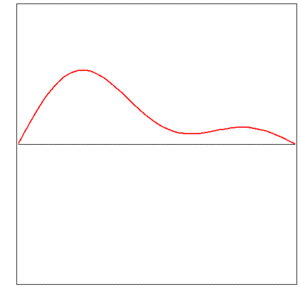User:Boris Tsirelson/Sandbox1: Difference between revisions
Jump to navigation
Jump to search
imported>Boris Tsirelson No edit summary |
imported>Boris Tsirelson No edit summary |
||
| Line 2: | Line 2: | ||
:<math> h(t) = h_0 - \frac12 g t^2 </math> | :<math> h(t) = h_0 - \frac12 g t^2 </math> | ||
(here ''h''<sub>0</sub> is the initial height, and ''g'' is the [[acceleration due to gravity]]). The height changes in time, but the function ''h'' does not. | (here ''h''<sub>0</sub> is the initial height, and ''g'' is the [[acceleration due to gravity]]). The height changes in time, but the function ''h'' does not. | ||
{{Image|Moving wave.gif|right||<small>Fig. 5. Linear combination of lowest 3 modes </small> }} | |||
The instantaneous shape of a vibrating string is described by a function (the displacement is a function of the coordinate), and this function changes in time. | |||
Revision as of 15:20, 18 November 2010
In Newtonian mechanics, coordinates of moving bodies are functions of time. For example, the classical equation for a falling body; its height at a time t is
(here h0 is the initial height, and g is the acceleration due to gravity). The height changes in time, but the function h does not.
The instantaneous shape of a vibrating string is described by a function (the displacement is a function of the coordinate), and this function changes in time.

